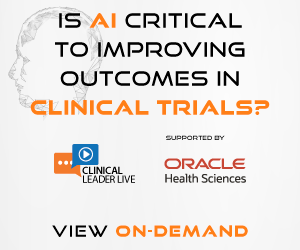A New Technology Takes Alkermes Into Oncology

By Ed Miseta, Chief Editor, Clinical Leader

Moving into a new therapeutic area is a difficult proposition for most companies. That is not news to Blair Jackson. Jackson, the SVP of corporate planning at Alkermes, has been with the company for more than 21 years and knows the challenges of moving into research on new diseases.
“If you look at our history, Alkermes has always been known for our CMC (chemistry, manufacturing, and controls) capabilities,” he says. “That expertise has allowed us to develop many drugs in cooperation with our commercial partners. Our success was in applying formulation and advanced technologies to molecules in a way that changed them, making them stable and effective for fighting disease.”
The company’s most recent journey began when it discovered an interesting technology being developed by Acceleron Pharma. The technology was developed to change and modulate large molecules, such as proteins, to make them better at treating patients.
A New Technology
In 2009 Alkermes agreed to license Acceleron’s Medifusion technology in a licensing and equity deal valued at $10 million. The technology promised to increase the circulating half-life of proteins and peptides. Alkermes hoped to extend the half-life of molecules in the body.

With the new technology, Alkermes began to examine how it could create new molecules and biologics that signaled differently in the body. The company was using a technique called circular permutation, which is a way of reorienting molecules in 3-D space, to allow stable fusion of proteins. That led to the discovery of several different opportunities. One of the most important ones was centered around IL-2 signaling and its use in oncology.
Addressing a Longstanding Problem
One of the new molecules that Alkermes developed was based on IL-2, a cytokine of the immune system, that was approved in the 1990s as the drug Proleukin to treat melanoma and renal cell carcinoma. However, there is a problem with using Proleukin, Jackson notes. Although the drug proved to be efficacious, it had a burdensome tolerability profile. Those adverse events were profound and caused patients to have life threatening issues. That meant IL-2 had to be used cautiously and not many physicians were comfortable administering it.
“We were able to learn that if we changed the molecule, it would signal in a different way,” says Jackson. “It could be designed to selectively bind to a slightly different receptor. There are essentially two receptors that modulate IL-2 signaling. There is a high affinity and an intermediate affinity receptor. What we wanted to do was shift the binding away from the high affinity receptor and move it to the intermediate receptor. We felt if we could do that, we could enhance the efficacy while also stopping or mitigating some of the side effects.”
A safer treatment would also mean the possibility of opening the treatment to other tumor lines outside of melanoma and renal cell carcinoma. After working on the technology for several years, Alkermes was able to create a molecule that proved that concept in preclinical models. The data demonstrated it could shift the binding onto the preferred receptor and, in animal models, increase the number of tumor-killing cells while mitigating the side effects.
Success And A Conundrum
Although this was good news for Alkermes, it also created a conundrum for the company. Alkermes was primarily known as a CNS company, known for developing medications for alcohol and opioid dependence, schizophrenia, and bipolar disorder. The company was certainly not a player in the oncology space. Many internal meetings were held to discuss if the company should pursue the treatment or if it should be handed off to another drug developer with more experience.
A good amount of self-reflection followed, but in the end Alkermes decided this was a good opportunity for the company and one it should not pass on.
“We developed a clear direction in which we wanted to take that opportunity,” says Jackson. “We developed targets of how we would study it. We also had a business case for how far we could take it in the development process.”
The treatment is now in multiple clinical trials, and data was recently presented from its ongoing Phase 1/2 ARTISTRY-1 study at the 2020 European Society for Medical Oncology (ESMO) virtual congress in September. The data showed encouraging activity when used as a single-agent in melanoma and durable responses in multiple tumor types – in ovarian cancer, triple negative breast cancer, esophageal cancer, and pancreatic cancer – in combination with pembrolizumab.
Today, Alkermes is at another decision point. The company must decide how big they want to go with the testing, how much to spend on it, and how it should be prioritized. The company must also decide whether to do it alone or with a partner. The technology and the approach being pursued has the potential for wide applicability.
“That actually makes the decision more difficult for us,” says Jackson. “If you have one molecule and one direction to go in, you just plow forward. When you have 10 directions you can go in, you must ask yourself what the best and quickest way is, and what route has the highest probability for success. That is where we are today.”
For now, the future is uncharted for Alkermes in the oncology space. Most companies will live and die in a designated therapeutic area. It is certainly not common for a company in the CNS space to make the leap into oncology.
“We have done the migration different than a lot of companies,” states Jackson. “When most companies enter a new area, it is via an acquisition of another company. Our method of entering a new space was more organic. That can be a pretty daunting task for many companies. There are a lot of things that need to line up to make that work. Your investors, your board, and your management team all need to be aligned. You also need to make sure you have the capabilities to enter a dramatically different area. That is something you can’t take lightly.”
For example, Jackson notes there may be questions that you would not know to ask in an area you have not worked in. For any company considering a similar move, Jackson recommends taking a close look at the talent within your own company. Jackson also believes it is your people who will make this type of change successful.
Alkermes is in Boston and has a diverse group of people with a plethora of industry experience. That experience allows the company to pivot into new therapeutic areas. He notes it is important to reflect on your development team and hire the right people to run the team. Those hires must have deep experience in the new therapeutic area to augment what you do not already know.
“Sometimes you see companies moving in a new direction and they feel they know it all,” adds Jackson. “They do not fully realize where their knowledge gaps lie until it is too late. You need to get someone with that experience on your team before you can put a plan together to move a product forward. The pharmaceutical industry is blessed with a varied group of talented people. Those people are necessary to make a move like this possible.”

